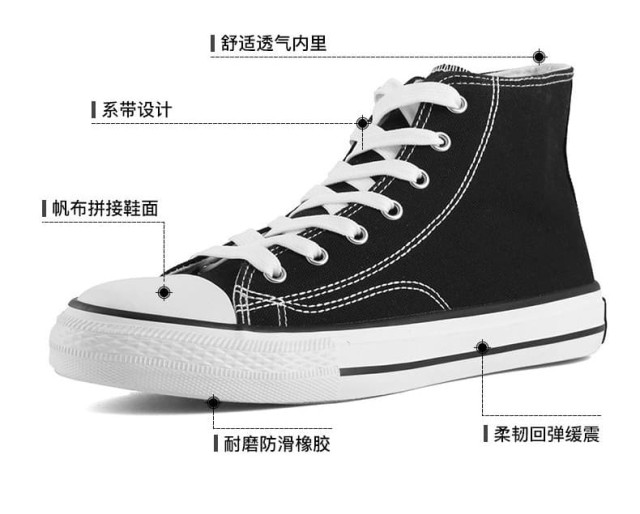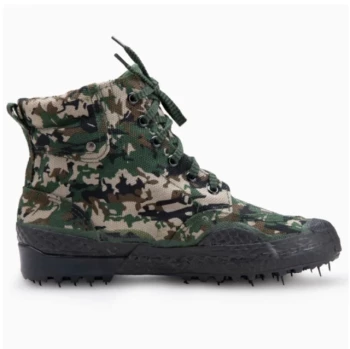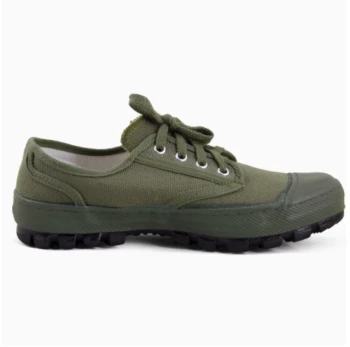Skateboarding isn't just about the board—your shoes dictate control, durability, and trick execution. Whether you prioritize board feel or impact protection, understanding the differences between vulcanized and cupsole construction is critical. This guide breaks down performance trade-offs, modern innovations, and pro skater insights to match your footwear to your skating style.
The Science of Board Feel
Board feel—the direct connection between your feet and the skateboard—is the holy grail for many skaters. Sole construction plays a pivotal role in this experience.
How Sole Thickness Impacts Trick Execution
- Vulcanized soles are thinner (typically under 5mm), offering immediate responsiveness for flip tricks and precise foot placement. Their flexibility mimics barefoot skating, ideal for technical street skaters.
- Cupsoles run thicker (often 8–12mm), absorbing shocks but dulling feedback. Modern designs now integrate softer rubber compounds to improve sensitivity without sacrificing cushioning.
Material Flexibility and Responsiveness
Vulcanized shoes use a single-layer rubber outsole bonded to the upper via heat treatment, creating a pliable, grippy surface. Cupsoles, molded as one rigid unit, prioritize stability—think shock absorption for stair sets or vert ramps.
Pro Tip: Skaters who rely on quick foot adjustments (e.g., kickflips or manuals) lean vulcanized, while those tackling drops prefer cupsoles.
Evolution of Cupsole Technology
Once criticized for feeling "clunky," cupsoles now rival vulcanized shoes in key areas.
Modern Innovations Bridging the Performance Gap
- Hybrid midsoles: Brands now fuse cushioned foam with responsive rubber, narrowing the board-feel gap.
- Strategic flex grooves: Sculpted tread patterns enhance flexibility where needed (e.g., toe areas for flicking motions).
Durability vs. Sensitivity Trade-offs
Cupsoles last roughly 30–50% longer than vulcanized shoes due to their reinforced stitching and dense rubber. However, vulcanized models like those from 3515’s OEM lineups now incorporate abrasion-resistant foxing tape to extend lifespan without compromising flexibility.
Choosing Your Skate Shoe
Your skating discipline and personal preferences should drive the decision.
Match Construction to Skating Style
| Style | Recommended Sole | Why? |
|---|---|---|
| Street | Vulcanized | Superior flick control and ground feedback for ledges/flatground. |
| Vert/Park | Cupsole | Added ankle support and impact protection during high landings. |
| Cruising | Hybrid | Balanced cushioning and responsiveness for varied terrain. |
Pro Skater Preferences
- Street skaters (e.g., Nyjah Huston) favor vulcanized for their broken-in feel from Day 1.
- Transition specialists (e.g., Bucky Lasek) opt for cupsoles to handle repeated ramp impacts.
Ready to Elevate Your Skate Game?
3515 equips distributors and brands with high-performance vulcanized and cupsole skate shoes tailored to every skating style. Our advanced manufacturing processes ensure durability, grip, and style—whether you’re supplying shops or launching a private label. Contact 3515 today to discuss custom solutions for your skate footwear line.
Key Takeaways:
- Vulcanized = Flexibility + Board Feel
- Cupsole = Support + Longevity
- Your style dictates the ideal choice—there’s no universal "best."
Related Products
- Durable Rubber Sole Outdoor Shoes Wholesale & Custom Manufacturing
- Durable Spiked Camouflage Boots Wholesale & Factory Production
- Wholesale Durable Camo Canvas Shoes with High-Traction Rubber Soles
- Durable Canvas Work Shoes with Rubber Lug Sole | Wholesale Manufacturer
- Durable Rubber-Soled Utility Shoes for Wholesale & Custom Brand Manufacturing
Related Articles
- How Vulcanized Rubber Boots Outperform Standard Footwear: Science and Practical Benefits
- Optimizing Vamp Production for Vulcanized Shoes: Materials, Techniques, and Quality Assurance
- How Vulcanized Rubber Work Boots Outlast Alternatives – And When to Choose Differently
- Why Vulcanized Shoes Dominate Durability and Comfort: A Technical and Practical Guide
- How Vulcanized Soles Became the Unsung Hero of Urban Footwear Culture




















